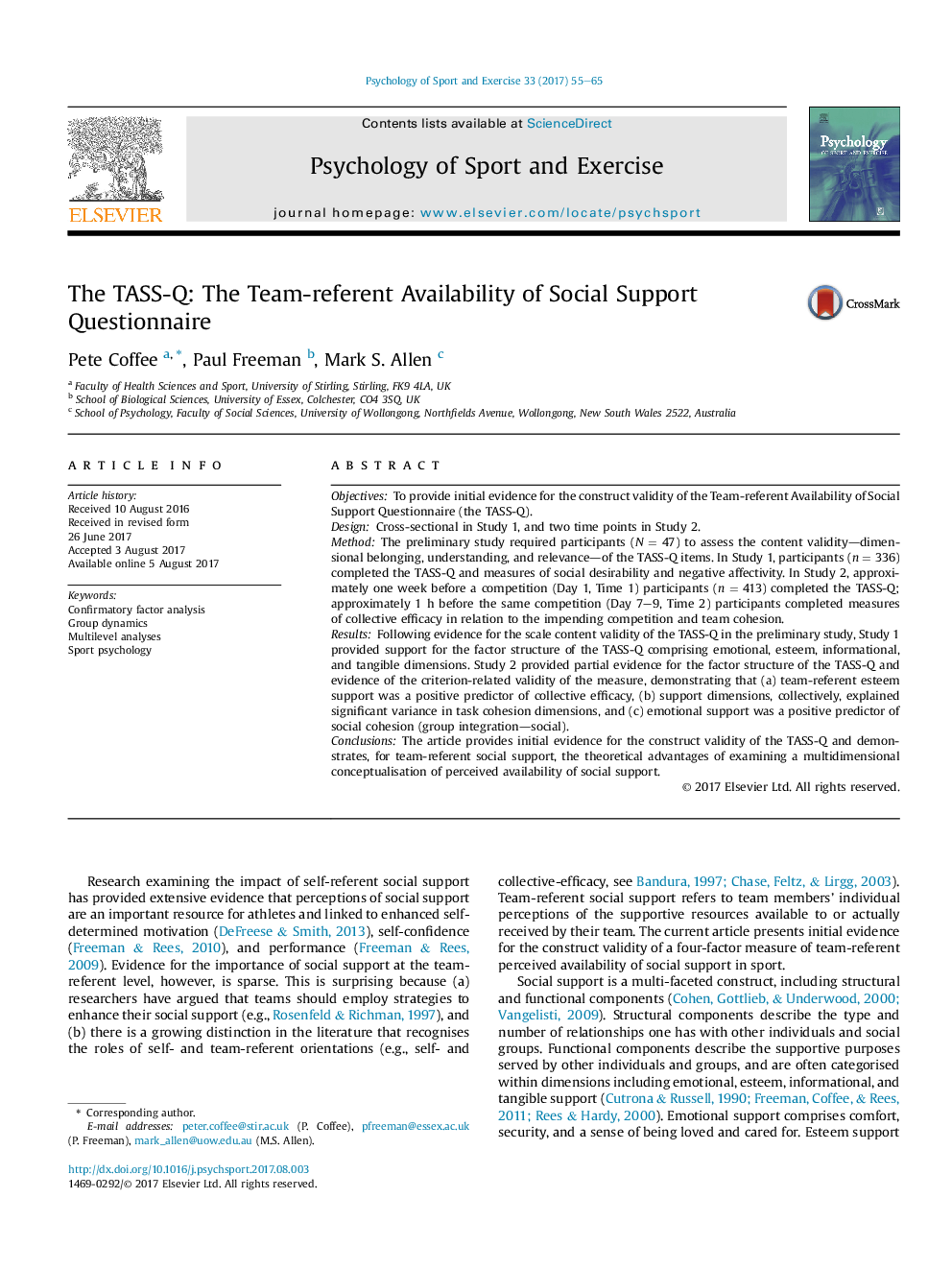| Article ID | Journal | Published Year | Pages | File Type |
|---|---|---|---|---|
| 5036514 | Psychology of Sport and Exercise | 2017 | 11 Pages |
â¢A measure of team-referent perceived availability of social support (the TASS-Q).â¢Multistudy paper.â¢Factor structure of the TASS-Q tested across two independent samples.â¢Predictive effects for TASS-Q dimensions upon collective efficacy and team cohesion.
ObjectivesTo provide initial evidence for the construct validity of the Team-referent Availability of Social Support Questionnaire (the TASS-Q).DesignCross-sectional in Study 1, and two time points in Study 2.MethodThe preliminary study required participants (N = 47) to assess the content validity-dimensional belonging, understanding, and relevance-of the TASS-Q items. In Study 1, participants (n = 336) completed the TASS-Q and measures of social desirability and negative affectivity. In Study 2, approximately one week before a competition (Day 1, Time 1) participants (n = 413) completed the TASS-Q; approximately 1 h before the same competition (Day 7-9, Time 2) participants completed measures of collective efficacy in relation to the impending competition and team cohesion.ResultsFollowing evidence for the scale content validity of the TASS-Q in the preliminary study, Study 1 provided support for the factor structure of the TASS-Q comprising emotional, esteem, informational, and tangible dimensions. Study 2 provided partial evidence for the factor structure of the TASS-Q and evidence of the criterion-related validity of the measure, demonstrating that (a) team-referent esteem support was a positive predictor of collective efficacy, (b) support dimensions, collectively, explained significant variance in task cohesion dimensions, and (c) emotional support was a positive predictor of social cohesion (group integration-social).ConclusionsThe article provides initial evidence for the construct validity of the TASS-Q and demonstrates, for team-referent social support, the theoretical advantages of examining a multidimensional conceptualisation of perceived availability of social support.
